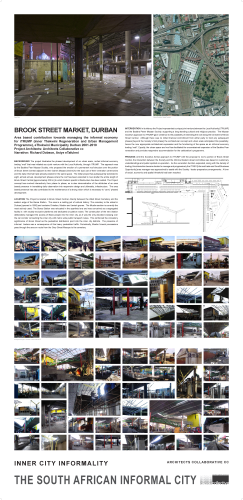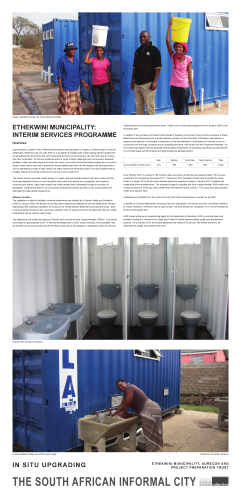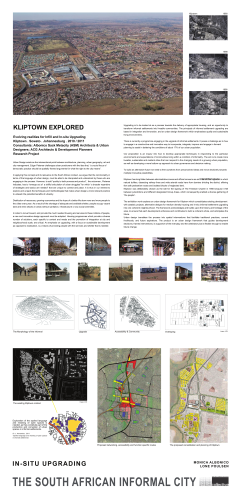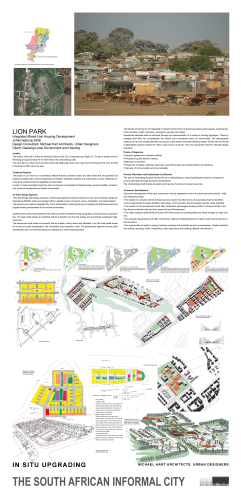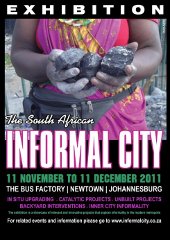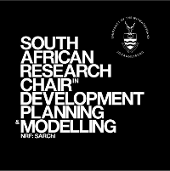You are here
IN-SITU UPGRADING
Below is a brief excerpt from each of the projects in this category. Click on the links or image to see the full project panel details and illustrations.
Besters Camp
Exhibitor: Harber & Associates
To appreciate ‘Bester’s Camp’ one has to revert back to the terrible race riots that erupted in Durban during January 1949. Africans and Indians were at loggerheads, mainly in Cato Manor, a mixed race, dense settlement of shacks behind Berea and only a few kilometres from the colonial CBD.
These upheavals gave the freshly installed National government a chance to systematically implement Apartheid planning. Africans were relocated to a new township, Kwa Mashu, to the north and Indians to Chatsworth in the south of the city. During the mid 70’s another Indian township, Phoenix was located further to the north. The wide space between these towns was left vacant, an empty condone sanitaire separating different race groups.
eThekwini Municipality: Interim Services Programme
Exhibitor: eThekwini Municipality, Aurecon and Project Preparation Trust
Approximately a quarter of the eThekwini Municipality’s total population of roughly 3.5 million reside in informal settlements. Whilst the City can pride itself on a successful and large scale mass housing delivery programme, not all settlements can be provided with full services and low income housing in the short term due to funding and other constraints. Yet informal settlements face a range of basic challenges such as access to adequate sanitation, clean and safe energy and roads. As a result, a pro-active and broad based programme to provide a range of basic interim services to prioritized informal settlements within the Municipality was developed with a view to addressing a range of basic health and safety issues and delivering rapidly to as many settlements as possible instead of providing a high level of service to only a select few.
Home Improvements
Exhibitor: Finmark Trust
As soon as a subsidy beneficiary moves into their new house, thoughts turn to how to make it home. Cashbuild estimates that 60% of new units are upgraded within 18 months of the household moving in. In some cases, it’s a new window, or a fence; in others the entire house may be engulfed in a new structure. This building is incremental, step-by-step, financed with savings, microloans and sometimes even formal bank finance. In situ upgrading of the government subsidised house.
Kliptown Explored
Exhibitor: Monica Albonico and Lone Poulsen
Urban Design exists as the intersectional point between architecture , planning, urban geography, art and city management. Edgar Pieterse challenges urban practioners with the idea that, "a crucial focus of democratic practice should be spatially framed arguments for what the right to the city means".
In applying this concept and its relevance to the South African context, we argue that the commonality in terms of the language of urban design, must be able to be interpreted and understood by those who are engaging in the process. However, to add "quality to both process and producf, the outcomes, Pieterse indicates, has to "emerge out of a skillful articulation of urban struggles" for which "a broader repertoire of strategies and tactics are needed" that are unique to context and place. It is thus in our interest to explore and unpack the techniques and methodologies that make urban design a more relevant practice to unleash the potential benefits of urbanity.
Lion Park
Exhibitor: Michael Hart Architects Urban Designers
The location of the site is within the Municipal District of the City of Johannesburg (Region Al. The site is situated north of Randburg and approximately 40 km North West of the Johannesburg CBD. The site is 39 Ha in extent and is bounded by the K29, Malibongwe Drive to the west, the N14 Freeway 10 the north, the R28 to the south and 6th road to the east.
